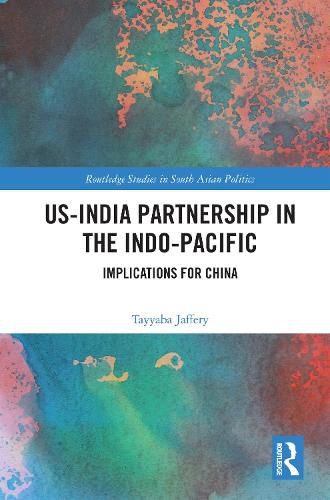Readings Newsletter
Become a Readings Member to make your shopping experience even easier.
Sign in or sign up for free!
You’re not far away from qualifying for FREE standard shipping within Australia
You’ve qualified for FREE standard shipping within Australia
The cart is loading…






This book discusses the partnership between the US and India in the Indo-Pacific region, which also serves as an engine for the Quad alliance of the US, India, Japan, and Australia. It investigates the multilateral efforts taken by the Quad and its effects on changing, reforming, or establishing a new regional security complex against China in the Indo-Pacific.
The theory employed by the author is based on a novel construct of Heterarchical Regional Security Complex (HRSC), which refers to a de-centralized principle of power distribution; that is, power is not concentrated in a particular element but rather diffused within the entire structure. When merged with the Regional Security Complex (RSC) Theory, it presumes the creation of such a security complex in which all members have roughly equal power. This book unravels how the Quad can operate as an HRSC in balancing against China's growing hold in the region. It is supplemented by the Balance of Threat framework to discuss the functioning of Quad from a minilateral perspective with a heterarchical overlay. Besides Quad, this book also focuses on the blooming partnership between the US and India since the turn of the century (2007-2020).
This book will be beneficial for researchers interested in international relations, Asian politics, regional security, and Indo-Pacific studies.
$9.00 standard shipping within Australia
FREE standard shipping within Australia for orders over $100.00
Express & International shipping calculated at checkout
This book discusses the partnership between the US and India in the Indo-Pacific region, which also serves as an engine for the Quad alliance of the US, India, Japan, and Australia. It investigates the multilateral efforts taken by the Quad and its effects on changing, reforming, or establishing a new regional security complex against China in the Indo-Pacific.
The theory employed by the author is based on a novel construct of Heterarchical Regional Security Complex (HRSC), which refers to a de-centralized principle of power distribution; that is, power is not concentrated in a particular element but rather diffused within the entire structure. When merged with the Regional Security Complex (RSC) Theory, it presumes the creation of such a security complex in which all members have roughly equal power. This book unravels how the Quad can operate as an HRSC in balancing against China's growing hold in the region. It is supplemented by the Balance of Threat framework to discuss the functioning of Quad from a minilateral perspective with a heterarchical overlay. Besides Quad, this book also focuses on the blooming partnership between the US and India since the turn of the century (2007-2020).
This book will be beneficial for researchers interested in international relations, Asian politics, regional security, and Indo-Pacific studies.